Parents should regularly clean their baby's mouth every night starting at birth.
Prepare a piece of gauze, cotton or cloth and a glass of drinking water.
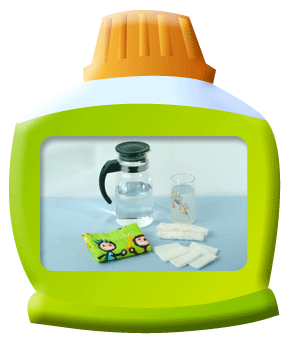
Wash your hands thoroughly with soap.
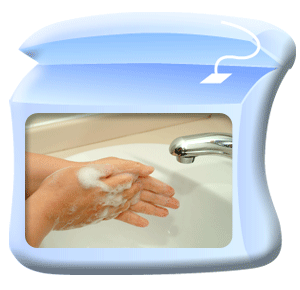
Wrap the gauze, cotton or cloth around your finger and damp it with water.
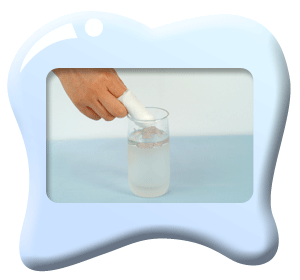
Gently put your finger inside your baby's mouth. Wipe the upper and then the lower gum pad once.
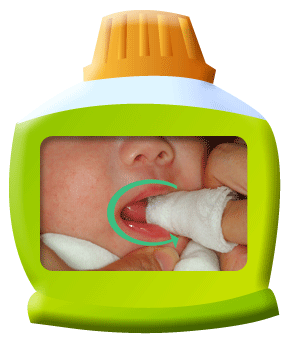
If my baby does not want to open his/her mouth, then how can I clean his/her mouth?
When you put your finger near your baby's mouth, your baby will slowly open his/her mouth as he/she thinks that you are trying to feed his/her. Try it with patience and you should be able to make your baby open his/her mouth
What if my baby bites my finger when I try to clean his/her mouth?
It is natural for your baby to bite your finger when you try to put your finger into his/her mouth. Keep wiping his/her mouth and it will be opened again.
I cannot reach the gums at the back of my baby's mouth. What should I do?
You can slip your finger at the corner of your baby's mouth and then reach inside along the inside surface of he cheek until you reach the gum at the back of the mouth. At this point insert your finger gently in-between the upper and lower gums (as shown in the picture). Your baby will open his/her mouth and you can wipe the gums at the back.
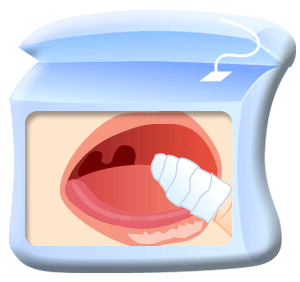
When is the best time to wipe my baby's mouth?
Since new born babies have not established a regular feeding pattern, it is difficult for parents to decide which meal will be their last meal of the day. Parents can then set a fixed time to wipe their baby's mouth every night.
When your baby grows older (over 6 months old) and has established regular feeding habits, you can wipe your baby's mouth after the last meal of the day.
I fed my baby and wiped his/her mouth before putting him to bed. Yet he/she did not want to go to bed and asked for milk again, what should I do?
The reasons for wiping your child's mouth after the last meal of the day are to get your child accustomed to cleaning his/her mouth regularly and going to bed with a clean mouth. Generally, it is only out of habit that children ask for milk before going to bed. Parents can feed them with water, or keep them preoccupied by patting, singing a song or telling a story.
If ulcers (Aphthous Ulcer) are found inside my baby's mouth, should I stop wiping his/ her mouth?
You should keep wiping your child's mouth avoiding the ulcer, if not possible, then stop wiping until the ulcer has healed. In general, ulcers will heal in a week's time.
When the first tooth appears, parents should wipe their children's mouths and teeth every day.
Following the eruption of incisors, you can start brushing your child's teeth with a soft infant toothbrush and drinking water. You can also use an infant toothbrush (as shown in the picture) to get your child accustomed to toothbrushes, which will become essential when the molars come in.
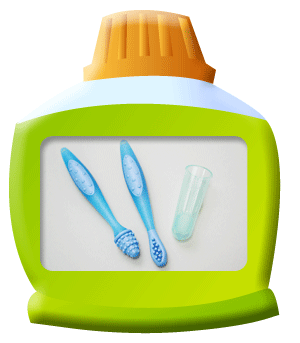
When the first molar comes in, parents must brush their children's teeth twice a day in the morning and before bed at night.
For children under the age of 2, parents should pick a toothbrush with soft bristles and the brush head size should be approximately the diameter of a Hong Kong 10-cent coin (~15mm). Make sure your child knows how to spit before using toothpaste for brushing.
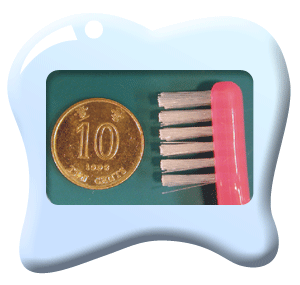
Start with the cheek side of the teeth.
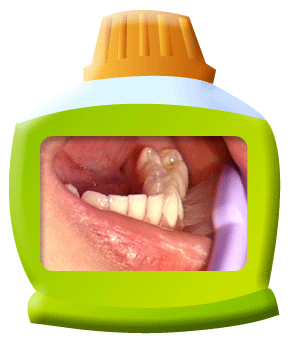
Repeat on the tongue side of the teeth.
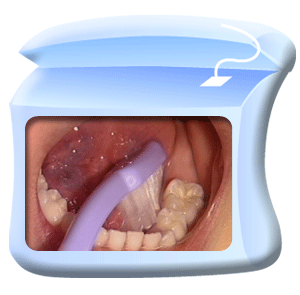
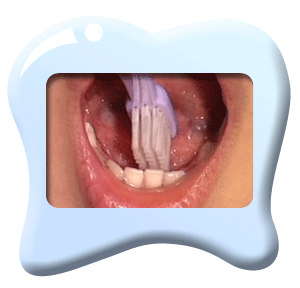
Finally, brush the chewing surfaces of all molars.
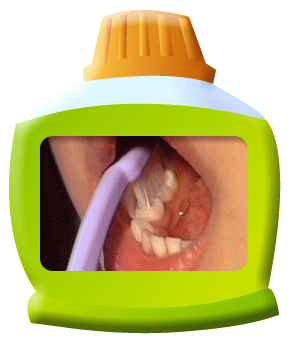
When you brush your child's teeth, you can either let your child sit on your lap or lay your child on a bed, so that you can see the teeth of your child clearly.
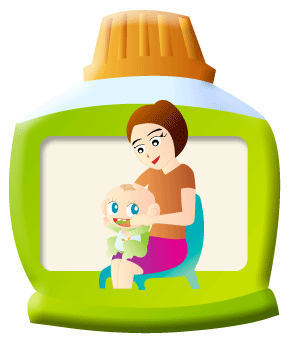
Parents should allow their children to learn brushing the teeth on their own when they are 2 years old. Parents should get their children a new toothbrush, with the length of the head less than the diameter of a 20-cent coin when their children are between 2 - 6 years old.
If your child knows how to spit, you can let your child brush his/her teeth with a pea-sized blob of fluoride toothpaste in the morning and before bed at night. Since your child's fine motor skill is not yet well-developed, he/she might not be able to master the toothbrushing skill and you need to follow up by re-brushing his/her teeth thoroughly every night.
When you brush your child's teeth, you can stand behind him/her at the side and tilt his/her head slightly upwards by supporting his/her chin with one hand.
Related topics:
Brushing Teeth is What Children Can Do (PDF Brochure)